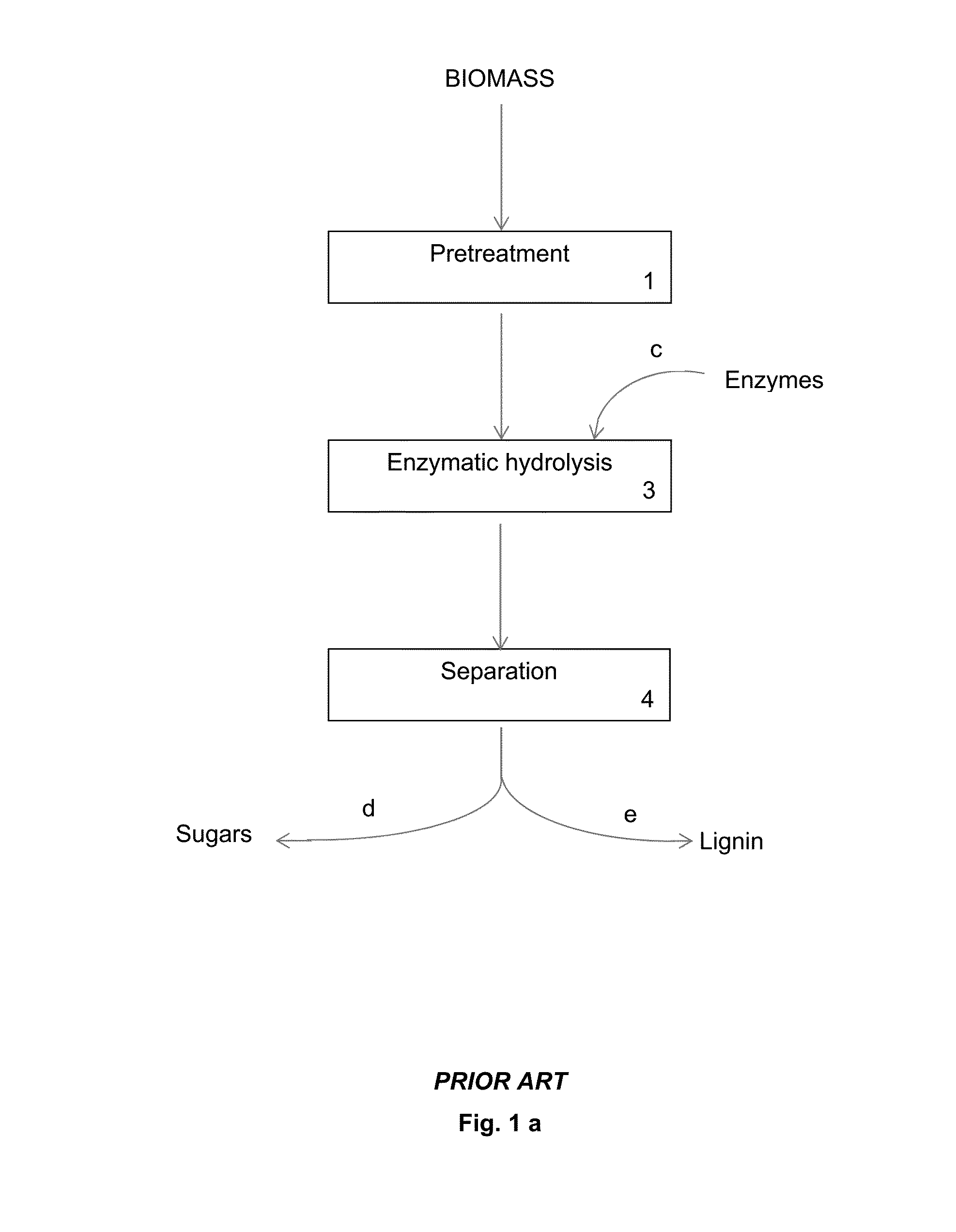Novel post-treatment to enhance the enzymatic hydrolysis of pretreated lignocellulosic biomass
a technology of lignocellulosic biomass and enzymatic hydrolysis, which is applied in the direction of cellulose treatment using microorganisms/enzymes, biofuels, etc., can solve the problems of low hydrolysis enzyme and chemical accessibility of the biomass polysaccharide components, low cost-competitive generation of sugars from biomass, and reducing the effective concentration of the
- Summary
- Abstract
- Description
- Claims
- Application Information
AI Technical Summary
Benefits of technology
Problems solved by technology
Method used
Image
Examples
example i
Improvements in 72 h Enzymatic Hydrolysis Yields
[0089]A 30 g (oven dried weight equivalent) of never-dried pretreated hardwood biomass (generated as described in U.S. patent application no. 2011 / 0143411) was mixed for 3 minutes in a Hobart mixer with an aqueous solution containing peracetic acid at a charge of either 3% or 4.5% (w / w on biomass) and solid content of 20% (corresponding to a solid to liquid ratio of 1:4). The mixture containing the pretreated biomass and peracetic acid solution was then transferred to a 2000 ml laboratory peg mixer and heated at 60° C. for 70 minutes with mixing at 20 rpm. Following completion of the post-treatment, the biomass was cooled in an ice water bath, pressed and washed three times with 600 ml of distilled water at room temperature.
[0090]Batch hydrolysis of the biomass with and without post-treatment was performed at 10% (w / v) solids content in 50 mM acetate buffer, pH 4.8 with 0.004% tetracycline and 0.003% cycloheximide, to prevent microbial...
example ii
Reduction in Time Required to Achieve a Target Cellulose Conversion Yield
[0091]The enzymatic hydrolysis experiments on pretreated hardwood biomass with and without post-treatment with a peracetic acid charge of 4.5% (w / w on biomass) were performed as described in Example I with the exceptions that a single enzyme loading of 5 FPU g−1 cellulose was used and the reaction was also sampled after 24 and 48 hours to obtain a more complete cellulose hydrolysis profile. The results are shown in FIG. 5.
example iii
Post-Treatment can be Performed with or without a Washing Step
[0092]Post-treatment at a peracetic acid charge of 3% (w / w on biomass) and enzymatic hydrolysis were performed as described in Example I with the exception that instead of being washed, the post-treated biomass was diluted to 10% solids and subjected to enzymatic hydrolysis at an enzyme loading of 10 FPU g−1 cellulose. The results are shown in FIG. 6. Accordingly, similar cellulose and xylose conversion yields can be obtained with and without washing the solid substrate after the post-treatment.
PUM
| Property | Measurement | Unit |
|---|---|---|
| Temperature | aaaaa | aaaaa |
| Temperature | aaaaa | aaaaa |
| Temperature | aaaaa | aaaaa |
Abstract
Description
Claims
Application Information
 Login to View More
Login to View More - R&D
- Intellectual Property
- Life Sciences
- Materials
- Tech Scout
- Unparalleled Data Quality
- Higher Quality Content
- 60% Fewer Hallucinations
Browse by: Latest US Patents, China's latest patents, Technical Efficacy Thesaurus, Application Domain, Technology Topic, Popular Technical Reports.
© 2025 PatSnap. All rights reserved.Legal|Privacy policy|Modern Slavery Act Transparency Statement|Sitemap|About US| Contact US: help@patsnap.com



